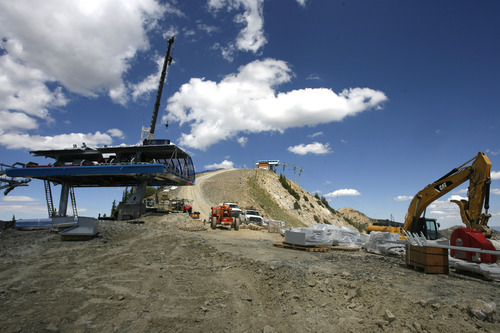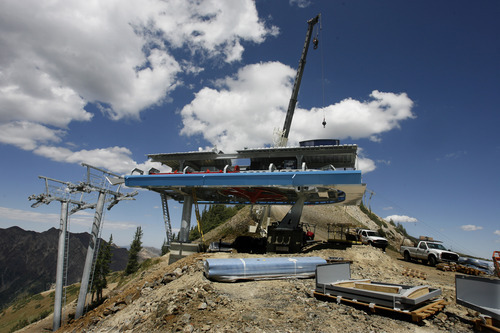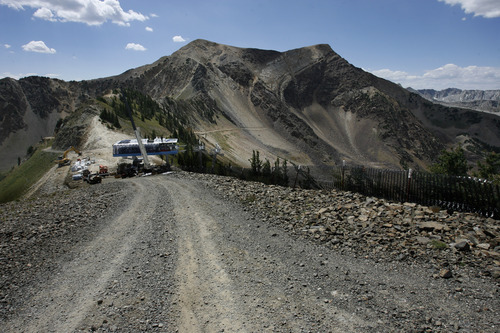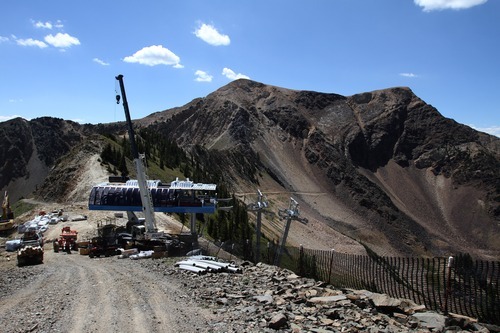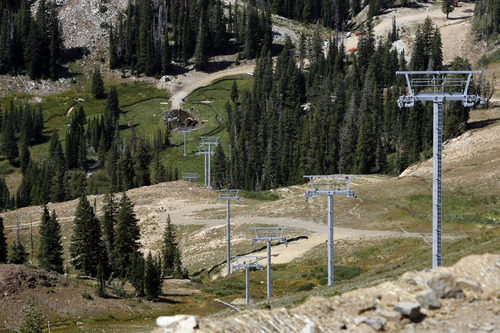This is an archived article that was published on sltrib.com in 2012, and information in the article may be outdated. It is provided only for personal research purposes and may not be reprinted.
Whoever would have thought that limited snow last winter would translate into a new Little Cloud chairlift this winter for Snowbird's skiers and snowboarders?
But that's how things played out.
"It was a good time to go lift shopping with Doppelmayr," said Dave Fields, vice president of resort operations at Snowbird Ski & Summer Resort, referring to the international lift-building company whose North American operations are based in Salt Lake City.
Because business was so weak last winter, most resorts were not expanding or sprucing up their operations, Fields noted, so Doppelmayr and Snowbird were able to come to terms on a package that suited them both.
"We did a two-lift deal," he said. A new high-speed detachable quad is being installed this summer to replace the fixed-grip, two-seater Little Cloud lift that has served the bowl below American Fork Twin Peaks since 1980.
Then, next summer, Doppelmayr crews will take out the Gad II chair that dates to Snowbird's inception in 1971-72 and will install a high-speed quad in its place — once the U.S. Forest Service completes its environmental assessment of the project.
Terms of the deal were not disclosed.
Fields is confident Snowbird pass holders will appreciate the new Little Cloud lift, which follows the previous chair's alignment, climbing a little more than 1,000 feet over its nearly 3,500-foot length.
"Instead of a seven- to eight-minute ride that felt like 20, it's 3½ minutes from bottom to top," he said.
Another major feature of the new lift is its unloading station. It makes a 90-degree turn just before riders dismount.
"It spits you out heading south," Fields said, "so if you make a left turn, you head into Mineral Basin, go straight and you head down the Road to Provo [traverse] and if you go right, you loop under the lift onto a newly made road and glide out to Regulator Johnson [run] and the Cirque."
Scott Pierpont, senior vice president of sales for Doppelmayr USA, Inc., said 90-degree unloading stations are less common in North America than in Europe, where they have demonstrated value as space savers.
"It will work really good up at Snowbird because of the location challenges there," he said, noting that more than a dozen of his company's employees have worked on the project this spring and summer — designing the lift, manufacturing components at Doppelmayr's Salt Lake City factory, pouring concrete, installing terminals and doing electrical work.
"We get to keep some people employed in the state of Utah, and we like to do that," Pierpont said. "It's a state-of-the-art lift and a great addition to Snowbird's infrastructure."
Snowbird pass holders also will see more technological improvements this season, said resort spokeswoman Emily Moench.
Through a contract with New York-based SitourUSA, new electronic signs around the resort will inform guests about the status of runs — which are open, which are closed, which are about to change one way or the other. Perhaps more importantly, she added, this information also can be distributed to cellphones, tablets or computers.
"It's controlled by Hidden Peak ski patrol dispatch," Fields said. "So if you're sitting on a chairlift, and [ski patrol] is working on avalanche control in Little Cloud Bowl, you can see that the bowl is going to open soon and you can start heading that way. Or if they're closing it, you know ahead of time that that's on the horizon."
The system also can inform skiers when the Little Cottonwood Canyon road is closed for avalanche-control work — or opening up, Moench noted.
Twitter: @sltrib.com


